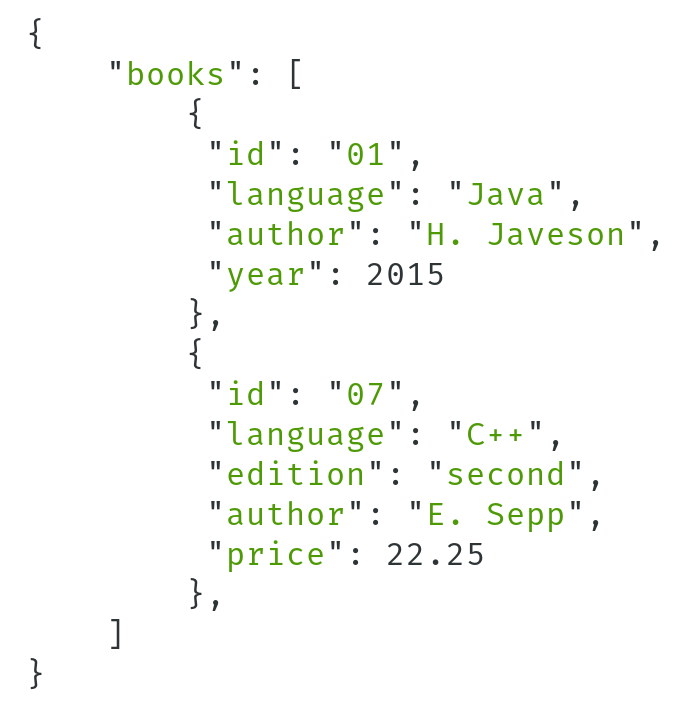NoSQL vs SQL - key diffrences
NoSQL vs SQL: Key Differences, Examples & Future Scope
Introduction
As data grows exponentially and applications demand more flexibility, choosing the right database becomes crucial. Two major types of databases dominate the tech world: SQL (Structured Query Language) and NoSQL (Not Only SQL).
While SQL databases have been around for decades and are used for structured data, NoSQL databases are gaining popularity due to their scalability, flexibility, and performance in handling unstructured or semi-structured data.
In this blog, we’ll explore the key differences between SQL and NoSQL, look at examples and syntax, and discuss their future scope in modern application development.
What is SQL?
SQL databases are relational databases that store data in structured tables with rows and columns. They follow a strict schema and use SQL for querying.
Key Features:
-
Structured and pre-defined schema
-
ACID compliance (Atomicity, Consistency, Isolation, Durability)
-
Best suited for complex queries and relationships
Example: MySQL, PostgreSQL, Oracle
SQL Syntax Example
What is NoSQL?
NoSQL databases are non-relational and can store data in various formats such as documents, key-value pairs, wide-columns, or graphs. They are schema-less, allowing flexibility in storing different structures.
Key Features:
-
Schema-free and highly scalable
-
BASE model (Basically Available, Soft state, Eventually consistent)
-
Best for big data and real-time web applications
Example: MongoDB, Cassandra, Redis, CouchDB
NoSQL (MongoDB) Syntax Example
Key Differences Between SQL and NoSQL
Feature | SQL (Relational) | NoSQL (Non-relational) |
|---|---|---|
Data Structure | Tables (Rows and Columns) | Documents, Key-Value, Graph, Column |
Schema | Fixed and predefined | Dynamic and flexible |
Query Language | Structured Query Language (SQL) | Various APIs and query languages |
Scalability | Vertical (scale-up) | Horizontal (scale-out) |
Transactions | ACID compliant | BASE model |
Use Cases | Banking, ERP systems | Real-time analytics, IoT, social media |
Examples | MySQL, Oracle, PostgreSQL | MongoDB, Cassandra, Firebase |
Future Scope of SQL and NoSQL
SQL Future Scope
SQL databases will continue to dominate areas where data integrity, consistency, and complex querying are essential. Enterprises, banking, and healthcare still rely on the reliability and maturity of SQL systems.
Upcoming Trends:
-
Integration with cloud services
-
AI-powered query optimization
-
Better horizontal scalability features
NoSQL Future Scope
NoSQL databases are rapidly expanding in areas such as big data, real-time applications, mobile apps, and content management systems.
Upcoming Trends:
-
More hybrid NoSQL+SQL databases
-
Serverless and multi-cloud support
-
Edge computing and IoT integrations
Conclusion
Choosing between SQL and NoSQL depends on your project needs. If you require complex transactions and structured data, SQL is your go-to. But for flexibility, scalability, and handling large volumes of unstructured data, NoSQL shines.
As technology evolves, both will co-exist and complement each other in building modern, efficient, and scalable systems.
Saurabh Gupta
University: Sri Balaji University, Pune.
School: School of Computer Studies.
Course: BCA (Bachelor of Computer Applications).
Interests: NoSQL, MongoDB, and related technologies





Great Job 👍
ReplyDeleteGreat job! The way you explained the topic made it so easy to understand.
ReplyDeleteWell Explained!
ReplyDeleteThnx for explaining it in very simplified way
ReplyDeleteNice Explanation..
ReplyDeletewell explained
ReplyDeleteWell Explained!
ReplyDeleteNice
ReplyDeleteThanks for breaking everything down so clearly—very helpful!
ReplyDeleteExcellent Blog Keep it Up
ReplyDeleteExcellent work 👍🏻
ReplyDeletenicely explain
ReplyDeleteCrazy
ReplyDeleteExcellent!
ReplyDelete